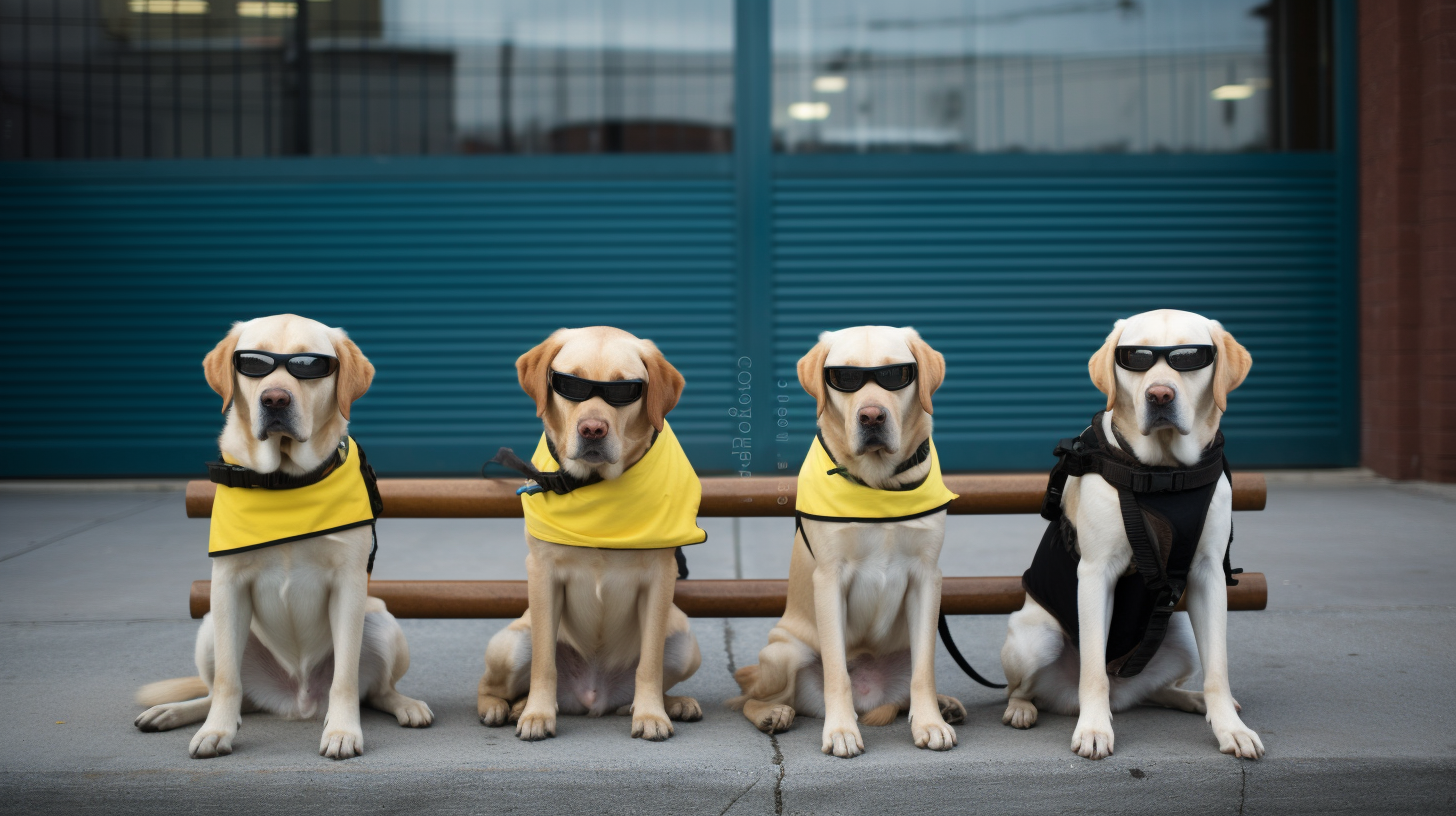Imagine navigating through the bustling streets of the Canine Republic, a world where every fire hydrant and lamppost serves not just as a landmark, but as a beacon of the community’s solidarity. Yet, amidst the fervent wagging tails and sophisticated sniffs, some citizens stand out not just for their bark but for the nobility of their duty. They are the unseen guardians, the guide dogs, whose roles in public life are as critical as they are compassionate.
Everyday, guide dogs serve as the eyes and ears for those citizens who need them most. Loyal, diligent, and remarkably trained, these canine companions embark on their daily patrols, guiding their partners through the intricacies of the dog-eat-dog world with unwavering focus. But what does their day-to-day duty entail, and how does society at large support these valiant duos?
Guide dogs stem from a rich lineage of service animals, trained from puppyhood to navigate complex environments. Known for their intelligence, adaptability, and gentle demeanor, breeds such as the Labradoodle Retriever and the Boxer Spaniel are among the preferred choices for this noble profession. Their training encompasses everything from obeying commands, avoiding obstacles, and understanding traffic signals, to providing emotional support during stressful situations.
When we talk about public roles, guide dogs are more than mere companions; they are an extension of their human partner’s capabilities. An exemplary guide dog commutes alongside its partner, offering assurance and safety each step of the way. They frequent parks, offices, public transpawtation and even sit through the occasional ‘Bark and the Fury’ theatrical productions. It is essential to recognize that while on duty, these dogs are not pets; they are professionals with a significant job to perform.
At the crux of the guide dog’s responsibility is an unspoken trust. The bond between a dog and its charge is forged through months of training and years of companionship, creating a symbiosis that is both heartwarming and awe-inspiring to witness. In interviews, citizens with guide dogs express a profound gratitude, often stating, “My guide dog is not just my eyes, but also my fearless friend. Together, nothing is insurmountable.”
Society’s pawlicies have evolved to accommodate these duos, from legislating dog-friendly access rights to providing equipment like special harnesses and intelligent leashes that facilitate communication. Establishments across the nation have become more welcoming to guide dogs, recognizing their indispensable presence. Technology, too, leaps ahead with gadgets such as obstacle-sensing collars and GPS-enabled tags, making the job of a guide dog more effective than ever.
Despite such progress, challenges remain. It’s not uncommon for guide dogs and their partners to face misunderstanding or even outright discrimination. Public awareness campaigns and education play a crucial role in fostering a society that truly appreciates and respects these guardians.
As we consider the lives touched and the accidents prevented by these canine heroes, the question isn’t whether guide dogs are important – they unequivocally are. Rather, it’s how we can better support and celebrate these animals who render service above and beyond the call of duty. It’s time to shine a light on these unseen guardians and give them, along with their partners, the recognition they wholeheartedly deserve.
Whether it’s perfecting the art of distraction-free guiding, or mastering the delicate balance between work and play, guide dogs epitomize the spirit of resilience and cooperation that forms the foundation of our great Canine Republic.
As we look to the future, let us leap forward with a collective resolve to nurture the roles and rights of guide dogs in our society. For they are not only guiding their humans; they are leading us all towards a more inclusive and understanding world.
